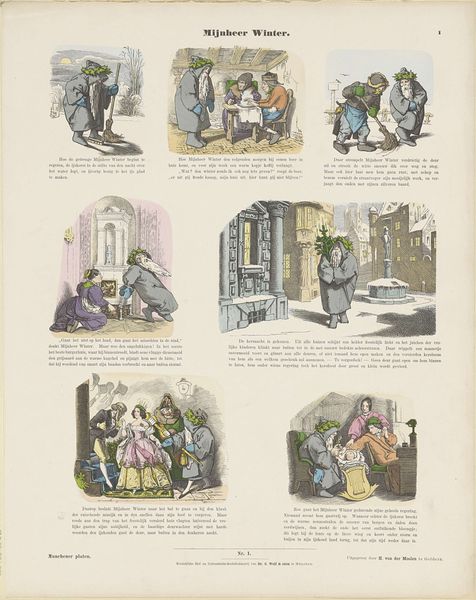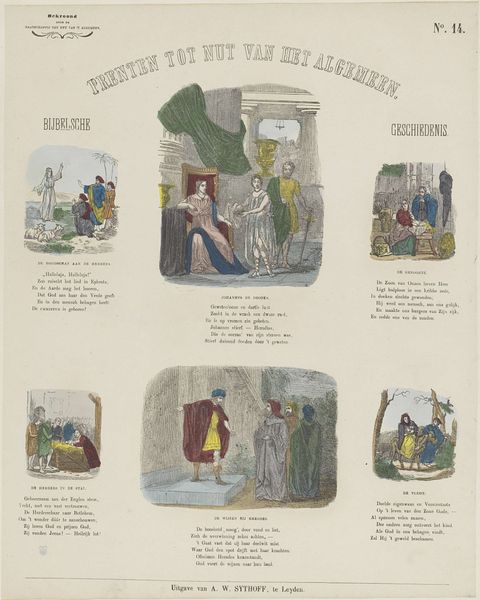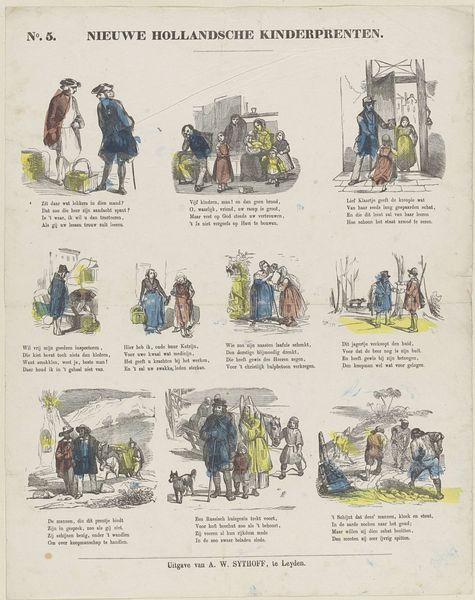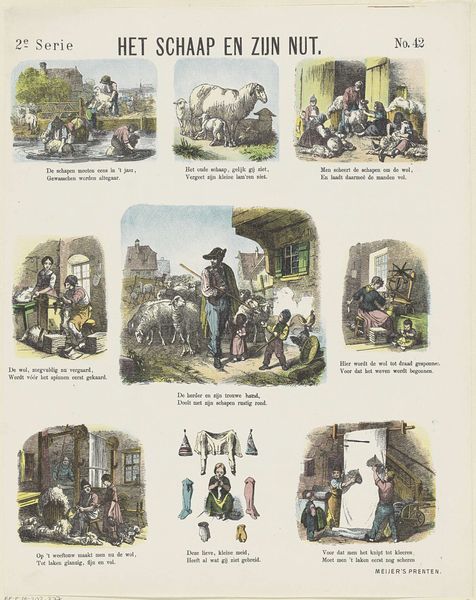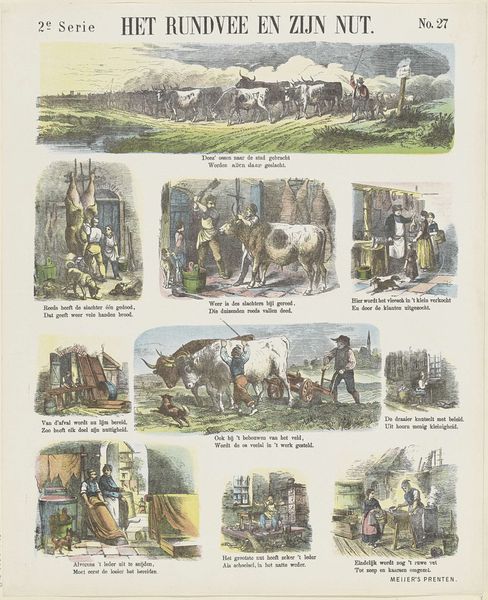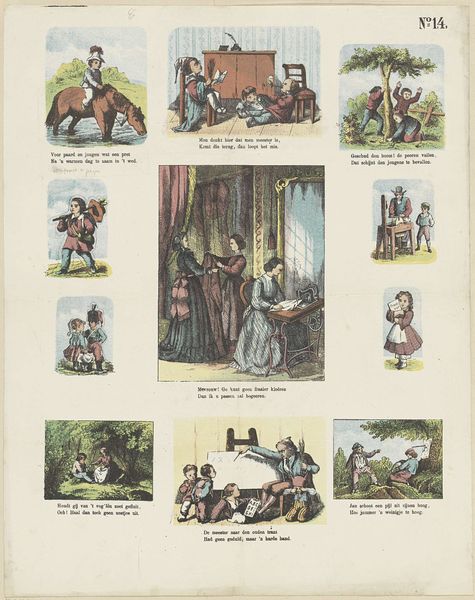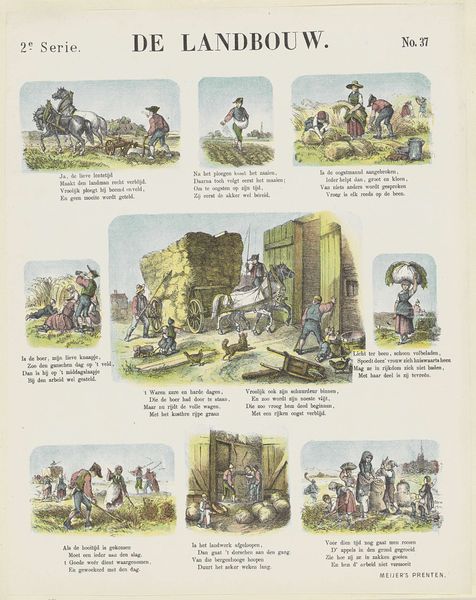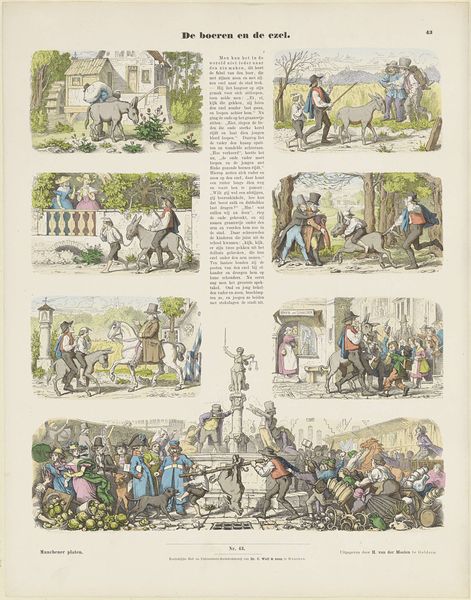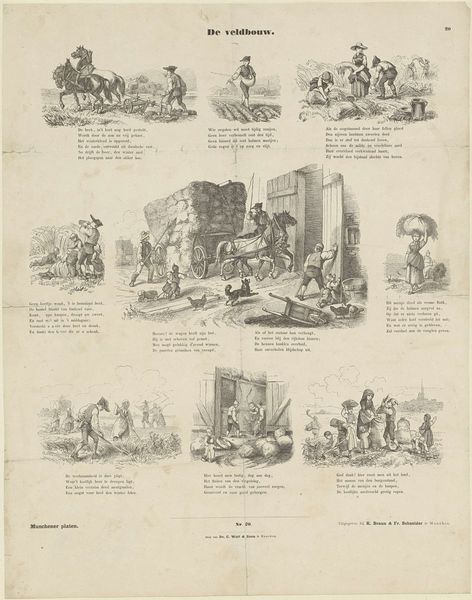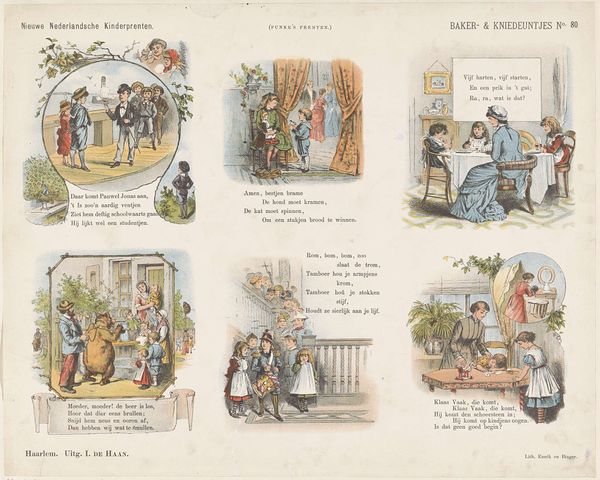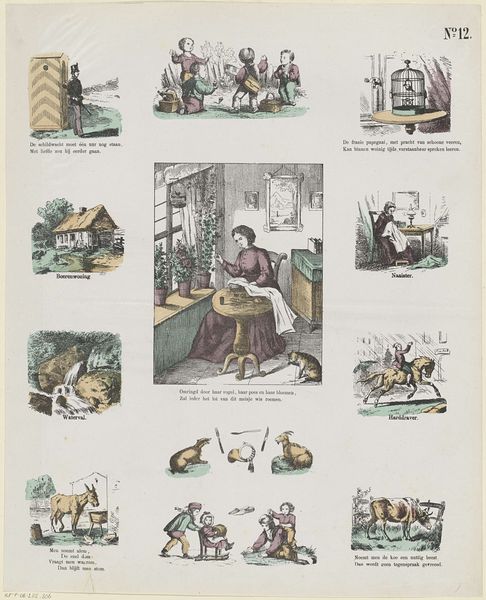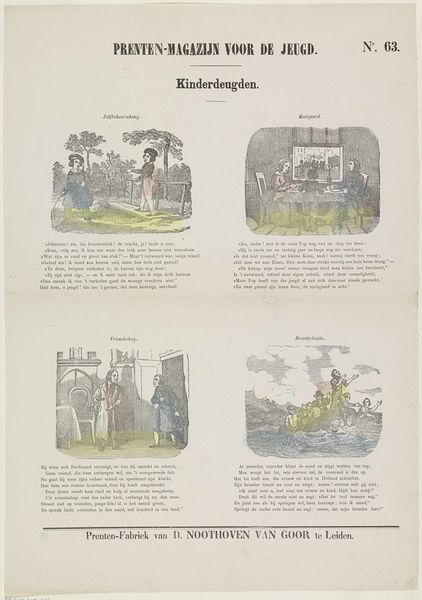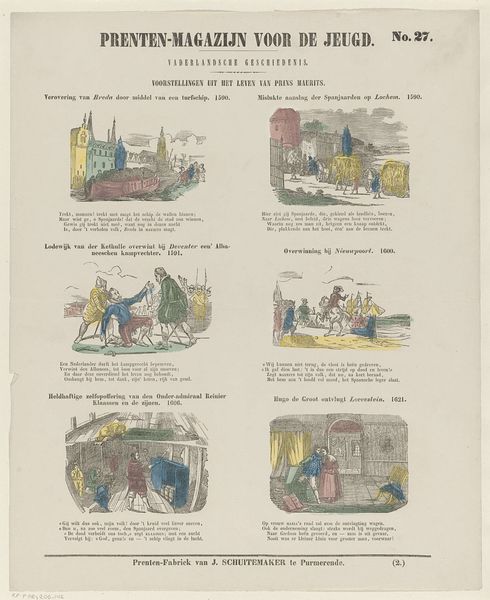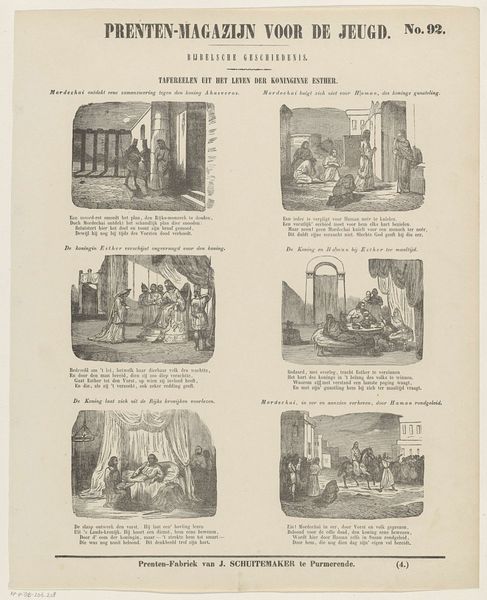
print, engraving
#
aged paper
#
page thumbnail
#
narrative-art
# print
#
sketch book
#
traditional media
#
personal sketchbook
#
sketchwork
#
journal
#
folk-art
#
sketchbook drawing
#
genre-painting
#
storyboard and sketchbook work
#
sketchbook art
#
engraving
Dimensions: height 440 mm, width 346 mm
Copyright: Rijks Museum: Open Domain
Curator: This captivating engraving, titled "Het schaap en deszelfs nut," translating to "The Sheep and its Use," probably dates between 1843 and 1920 and is attributed to Ludwig Gustav Voltz. It is so interesting. What springs to mind when you see it? Editor: Instantly, it makes me think about material culture and the chain of production. The composition with the sheep shearing scene, and other various processing scenes looks really tactile. Almost makes you feel the wool. Curator: Absolutely. There’s a pastoral feel—a narrative about transforming raw material into everyday textiles. This artwork presents itself as a glimpse into a past world—I want to go there! What do you see in the imagery that speaks to this? Editor: Well, look at the depiction of each step: washing the wool, the spinning, the weaving, all clearly showing the labor involved. It seems that folk art is involved somewhere here. It reminds us that clothes are not just plucked from a shelf; this is an artwork about materials meeting means in production of a raw material. Curator: Right, from the sheep's back to the tailor’s shop and the clothing on someone’s back. There's an element of the quaint and rustic—that feeling is all part of its charm. It is the poetry of production and is as if each little square reveals an almost dreamlike glimpse. Editor: I'd say you are right, in how the materialist value and labor are also bound to folk customs, as such traditions of art practice, is a production itself. So that even while we witness art and folks meeting through material reality. A sort of dialectic for its age in making, almost. Curator: Yes, quite lovely isn't it. To know that folk tradition met with the need, is the most appealing aspect about the work to me, more than how each block feels or operates separately, it truly only works in being a series. Editor: Indeed, what might have appeared as straightforward manual work to a viewer in the early 20th century holds so much deeper layers to its production and message now in how the art delivers them.
Comments
No comments
Be the first to comment and join the conversation on the ultimate creative platform.
